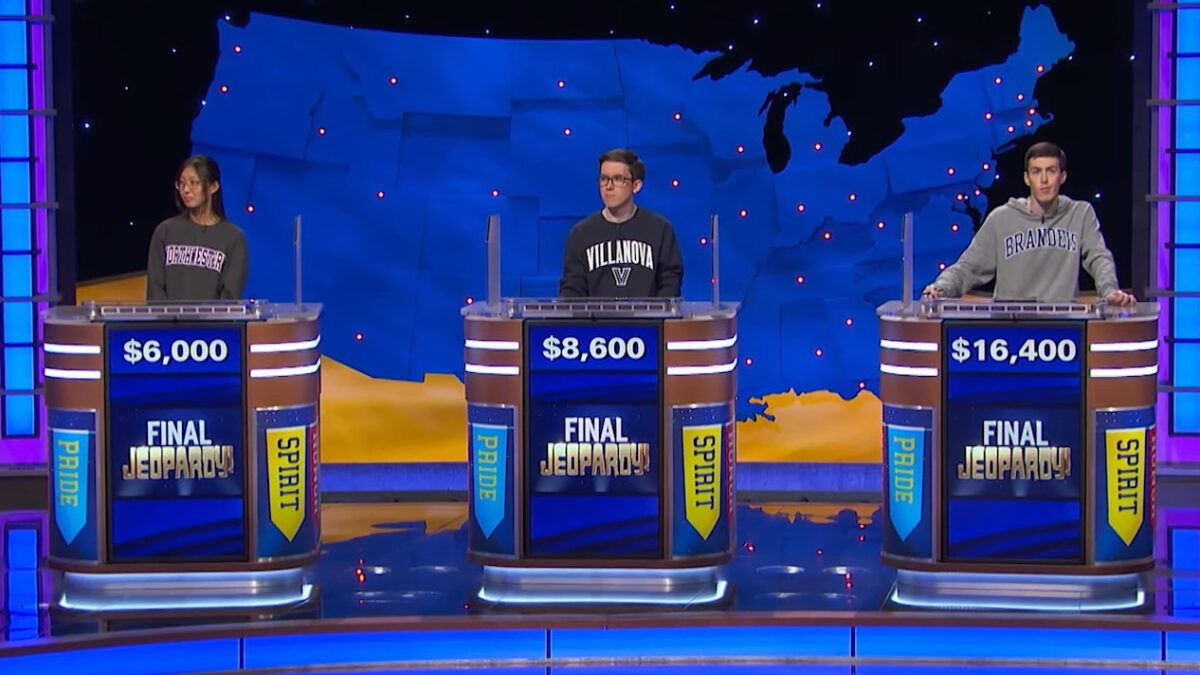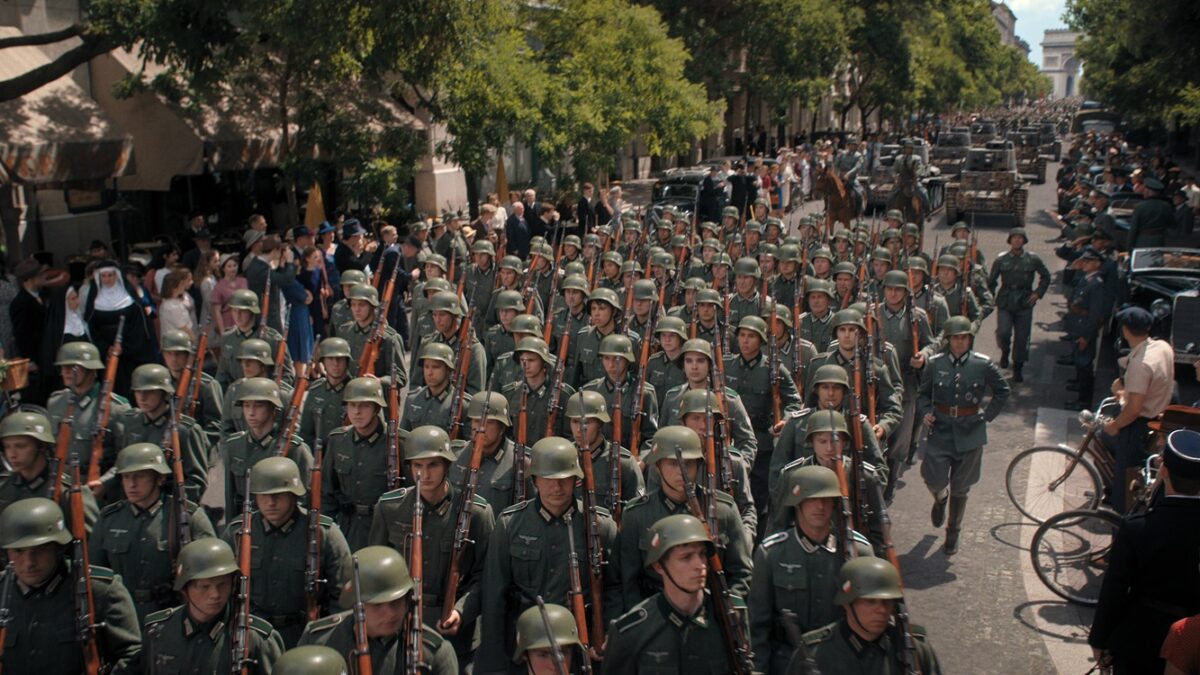Tuesday night saw “Jeopardy!” return to prime-time television for the first time in two years. The quiz show converted its College Championship into an eight-night special airing on ABC during the February sweeps month.
The special follows up on its Greatest of All Time tournament, which aired right before the Covid lockdowns began, as well as the success of a celebrity version of “Jeopardy!’s” sister show, “Wheel of Fortune,” now in its second season on Sunday nights on ABC.
Mayim Bialik is hosting this tournament, taking on a role—developing new prime-time specials—she originally was supposed to inhabit before the career of Alex Trebek’s would-be replacement, Mike Richards, imploded, making her the temporary host of the regular syndicated program. The College Championship illustrates continued trends that started before the lockdowns, and before Trebek’s death left a void at the hosting position: a focus on expanding the “Jeopardy!” brand and professionalizing the contestants.
New Format
Moving the College Championship from syndication to prime-time required “Jeopardy!” to make some tweaks to its normal tournament format:
- Six hours of quarter-finals—an hour each this Tuesday, Wednesday, Thursday, and Friday, along with an hour next Tuesday and Wednesday. Those hour-long specials will see 12 half-hour quarter-final games, where 36 contestants will compete in winner-take-all contests.
- Two hours of semi-finals—an hour next Thursday and Friday—featuring four half-hour semi-finals, where the 12 quarter-final winners will compete.
- An hour long final on Tuesday, February 22. That match will feature three of the four semi-final winners—those with the three highest scores in their semi-final matches. As with most “Jeopardy!” tournament finals, it will consist of two separate half-hour games, with the winner (based on total combined points) receiving the $250,000 grand prize.
The format means this tournament will take place over 10 full hours of game play, twice the length of the typical tournament, which usually consists of 10 half-hour shows. It will also have more than twice as many contestants (36) as the typical tournament (15).
But the format also means one semi-final winner will not advance to the finals, likely a “Jeopardy!” first. Another change caused by the move to network television: The initial “Jeopardy!” round can go without commercial interruption—a benefit for viewers, but a potential drawback for a contestant who struggles at the start and might benefit from some advice on operating the buzzer during an early ad break.
New Focus on Statistics
As “Jeopardy!” continues to branch out into prime-time, it also decided to embrace a trend that it had heretofore ignored: Player statistics. Beginning in late January, the show began releasing box scores for the prior day’s game; one example is available here.
The box scores include one notable statistic not previously available to the public: The number of times a contestant attempted to ring in, as logged by the show’s buzzer system. Comparing the number of attempts to buzz in (out of 60 possible clues) with the number of successful attempts reveals both a contestant’s familiarity with the material (Did they know, or think they knew, a lot of the clues, such that they tried to buzz in often?) and success with the buzzer—one of the keys, if not the key, to winning on “Jeopardy!”
Beyond that one metric, the other statistics are available on sites like the J! Archive, and have been for years. The fans who post on such sites have archived contestant statistics, not to mention the content of clues, going back years, and have retroactively archived many episodes that haven’t aired for decades.
Up until this point, “Jeopardy!” had not shown an interest in compiling such information. When I checked its website in early 2019, just before James Holzauer started his record-breaking run, www.jeopardy.com didn’t have the highest one-day score posted online (at the time, $77,000).
When once asked about the J! Archive, Trebek said, “Come on, people, get a life”—and it showed. Heading into Final Jeopardy during a game in the 2011 Tournament of Champions, Trebek mentioned that contestant Roger Craig could set a new record for highest one-day score. Craig puckishly asked Trebek what that record was, and Trebek didn’t know off-hand.
But Craig’s question was rhetorical. He knew the record was $77,000, because he had set the record himself 14 months earlier. Because Trebek didn’t keep close tabs on the “Jeopardy!” record book, he didn’t realize that Craig was trolling him.
Conversely, new producer Michael Davies, formerly of “Who Wants to Be a Millionaire?,” considers himself a soccer fan. His attempt to formalize box scores into “Jeopardy!,” which fans have done on an informal basis for years, serves as an attempt to popularize the game, much as Henry Chadwick (like Davies, a Brit) did for baseball a century and a half ago.
Sanitized Game?
These converging trends—moving “Jeopardy!” into prime-time, promoting super-champs, standardizing statistics—professionalize the game. They could also sanitize it.
“Jeopardy!” specials like the All-Star Games and Greatest of All Time tournaments have resulted in a handful of recurring contestants who return every few years for a new contest. Consider too that someone like Holzauer had appeared on two different game shows—“The Chase” and the short-lived ABC special “500 Questions”—before moving on to “Jeopardy!” stardom.
Some have noted the “everyman” quality of early “Jeopardy!” champions, people like Frank Spangenberg, the New York City transit cop with a distinct mustache who won more than $100,000 during the show’s sixth season. If the show’s contestant pool gets narrowed—because of a greater focus on casting former champions, “semi-professional” contestants who have appeared on other quiz shows, or people who have large amounts of time to create algorithms of what material to study—it could change the complexion, and perception, of “Jeopardy!”
That said, the higher ratings when contestants get on long winning streaks suggest that more explicitly converting “Jeopardy!” into Battle of the Trivia Super-Champs might have popular appeal. Some might suggest this observer has little grounds to talk, having appeared on multiple game shows. But tweaks to formats come with trade-offs, and potential unintended consequences—a fact Davies and the “Jeopardy!” crew should keep in mind in the months to come.
The “Jeopardy!” College Championship continues through February 22 on ABC. Check your local listings for times in your area.









